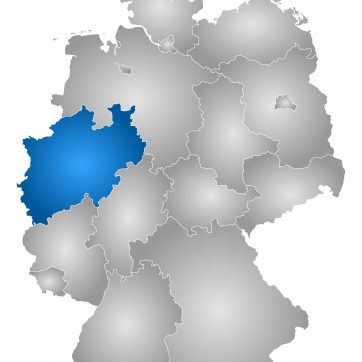North Rhine-Westphalia, Germany

The challenge
Decarbonising the steel industry could result in a re-organisation of regional value chains and geographic clusters, because existing assets are partly devaluated. Sites in the inland (e.g. North-Rhine Westphalia) fear that they could loose shares because of higher transport costs, in comparison to sites on the coast. However, the set of actual investment criteria is highly complex.
What we achieved
The project developed a model that simulates regional allocation of future investments in steel production capacities, in a more decarbonised and circular future European and global economy. The scenarios derived in the modelling show potential regional effects and are meant to empower stakeholders in the region (regional policy, trade unions, civil society) to discuss challenges and opportunities of decarbonisation together with steel industry and science.
The model results showed that regional differences in electricity or hydrogen costs will easily outweigh any other site specific factor costs like transport costs for iron ore or steel products – which are most relevant today. If on the other hand energy prices are almost equal between sites, the existing assets of EAF and hot rolling have a stabilizing effect and prevent strong regional structural effects in steel production.
What does this mean for strategic investments in the steel industry?
Discussions with NRW and Swedish stakeholders revealed a strong interest in developing an electrification strategy for their steel sites and that companies are reasoning future business cases and thinking about possible regulation they would need to be competitive with steel sites outside the EU that are not GHG regulated. Discussions also revealed that transport costs – today a very important issue – will become less relevant in the future and that active infrastructure planning could improve the competitiveness of inland sites compared to coastal sites by levelling off regional energy price spreads.
The discussion of the model and the scenarios helped to understand the reasoning behind strategic investments in steel industry. Infrastructures needed to enable decarbonisation of heavy industries should be the next step to discuss: First indicative roadmaps on hydrogen infrastructures have been developed bottom-up on a regional level in the Netherlands. NRW might soon follow. Guiding such developments by systematical analysis of competitiveness and future market conditions seems to be a relevant next task. A model, such as the one developed in the project, can help structuring such discussions as it can show plausible trajectories of future strategic investments on a regional level, albeit it cannot predict them. Such scenarios may be a valuable input for companies now testing different technology concepts and for regional agencies developing infrastructure concepts.
Lessons learnt and next steps
The project shows that today’s assets in the value chain of steel making are probably also very relevant in a future of new break-through technologies based on renewable electricity and it may thus be reasonable to take a pro-active stand towards decarbonisation in the regions affected.
Today’s heavy industry regions could therefore develop roadmaps for the introduction of large scale hydrogen use in industry. This may help especially inland regions to search for suitable cooperation with possible energy hubs like renewable electricity hot spots or international ports in order to take the step from publically funded demonstration plants to large scale implementation.
A follow-up service might be to discuss regional consequences and chances of Low carbon transition with actors in different EU industrialized regions in order to enable them to formulate strategic views on the issue
Partners
Wuppertal Institute, Lund University

